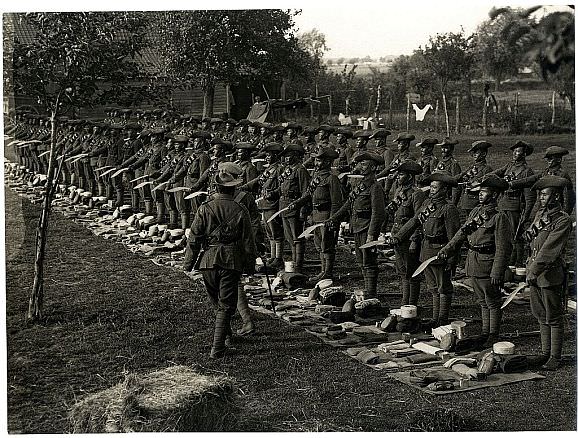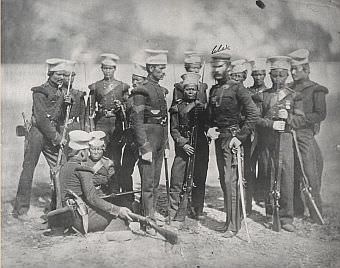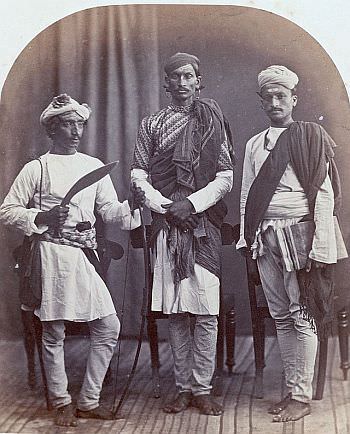The Knife:
It has a few spellings, most common are kukri and khukuri, but basically it’s a mid-length curved knife comprising a distinctive Cho (notch) that is the national knife of Nepal. This shape is believed to have existed 2500 years ago; the Kopis used by the Greeks is the probable source of its design. In our modern times the kukri really came to note outside Nepal with the Nepal War in 1814-15 after the formation of British Gurkha Army. It was carried in a wood sheath covered in leather, most having a wooden grip or horn and traditionally having two small knives (one small knife for chores and the other left unsharpened for flint striking and to knock burrs from the main blade), it is one of the most famous and feared knives of the world.
The Cho:
The most appealing and distinctive part of the kukri is the notch or Cho cut into the blade directly in front of the grip near its base. Its unique shape and utility objectives have been the source of much debate.
Practicality- the notch works as a blood stop to prevent blood or fluid from going towards the handle so that a good grip can be maintained. Additionally it was to stop the sharpener when in use from reaching the handle.
Religiously- it signifies the Hindu fertility symbol (OM) and represents the sacred cows hoof.
Fiction- it is also believed to have been developed as a device for catching and neutralizing an enemy blade in close combat. However, this is more myth than reality. When things got really rugged it is said the notch was used as a can opener or rest curvature for index finger of the using hand while slicing, but these have not been proven true either.
What is true is that all traditional kukri’s carry this notch. You can buy original kukri''s from the arsenal of the Royal Nepalese Army as well as find modern day versions and machetes online at AtlantaCutlery.com.
It has a few spellings, most common are kukri and khukuri, but basically it’s a mid-length curved knife comprising a distinctive Cho (notch) that is the national knife of Nepal. This shape is believed to have existed 2500 years ago; the Kopis used by the Greeks is the probable source of its design. In our modern times the kukri really came to note outside Nepal with the Nepal War in 1814-15 after the formation of British Gurkha Army. It was carried in a wood sheath covered in leather, most having a wooden grip or horn and traditionally having two small knives (one small knife for chores and the other left unsharpened for flint striking and to knock burrs from the main blade), it is one of the most famous and feared knives of the world.
The Cho:
The most appealing and distinctive part of the kukri is the notch or Cho cut into the blade directly in front of the grip near its base. Its unique shape and utility objectives have been the source of much debate.
Practicality- the notch works as a blood stop to prevent blood or fluid from going towards the handle so that a good grip can be maintained. Additionally it was to stop the sharpener when in use from reaching the handle.
Religiously- it signifies the Hindu fertility symbol (OM) and represents the sacred cows hoof.
Fiction- it is also believed to have been developed as a device for catching and neutralizing an enemy blade in close combat. However, this is more myth than reality. When things got really rugged it is said the notch was used as a can opener or rest curvature for index finger of the using hand while slicing, but these have not been proven true either.
What is true is that all traditional kukri’s carry this notch. You can buy original kukri''s from the arsenal of the Royal Nepalese Army as well as find modern day versions and machetes online at AtlantaCutlery.com.


Gurkha''s at kit inspection showing kukris
Beyond the Knife:The kukri is also much more than just a knife or a weapon because of its religious values it carries and beliefs it has created. The shape of the blade itself represents the trinity symbols of Brahma, Vishnu and Shiva, the three most famous and influential Hindu Gods.
It is also worshipped on different occasions and festivals mainly in Dashain, where it is put into action beheading animals as offerings to the Durga goddess (Goddess who slaughtered devils and evil).
Similarly in Biswakarma Puja, devotees worship it along with other iron and steel tools to pay their respect and loyalty. Why during sacrificial ceremonies? There is a belief in Nepalese society that it must taste blood to become a kukri. This sacrificial tradition follows in the Gurkha Army where each year animals are sacrificed to foresee good fortune and blessings to the regiments and its soldiers.
The faith and belief that the kukri has produced are remarkable and interesting. A kukri when kept at home would bring fortune, prosperity and kill evil spirits. It is believed to have spiritual power to scare off demons, evils and nightmares and thus kept under the pillow of a man or even a child who suffers from a sleeping disorder.
Similarly in Mongolian ethnic groups a man would have his kukri cremated along with him in a belief that the kukri would defeat Satan so that the departed soul could go to heaven and rest in peace.
A man with a khukuri represents a man of honor, dignity, courage and loyalty who would kill and get killed for the right cause. Padma Shamsher Jung Bahadur Rana, former Prime Minister of Nepal stated it was the national as well as religious weapon of the Gurkha, so it should be carried while awake and placed under the pillow when retired.
Finally, the oldest kukri known to exist is the one on display at the National Museum in Kathmandu which belonged to Drabya Shah, the King of Gorkha in 1627 AD. It is, however, certain that the origins of the knife stretch further back, perhaps 2500 years.
Legendary stories:
One British troop found itself surrounded by Gurkhas. As the siege continued the casualties mounted, the supply lines were cut and ammunition ran out. The British hoisted the white flag and watched a group of Gurkhas step forward to receive the surrender, their large kukri knives strapped proudly to their hips.
When the Gurkhas reached speaking range the Gurkha leader announced that their surrender would be fine, but if the British really wanted to continue fighting, they had some excess ammunition they would be happy to loan them so that the battle might continue! Of course the Tommies declined. They were treated well, but it was this behavior that earned the Gurkhas the most notoriety.
This type of fierceness to battle and win against all odds and honor your foe was well respected by the British. It did not take long before the British saw these tough as nails, Indo-Mongol descendants as better allies and they began to hire them as mercenaries fighting alongside their own troops.
One British troop found itself surrounded by Gurkhas. As the siege continued the casualties mounted, the supply lines were cut and ammunition ran out. The British hoisted the white flag and watched a group of Gurkhas step forward to receive the surrender, their large kukri knives strapped proudly to their hips.
When the Gurkhas reached speaking range the Gurkha leader announced that their surrender would be fine, but if the British really wanted to continue fighting, they had some excess ammunition they would be happy to loan them so that the battle might continue! Of course the Tommies declined. They were treated well, but it was this behavior that earned the Gurkhas the most notoriety.
This type of fierceness to battle and win against all odds and honor your foe was well respected by the British. It did not take long before the British saw these tough as nails, Indo-Mongol descendants as better allies and they began to hire them as mercenaries fighting alongside their own troops.

The Nusseree Battalion

A Gurkha, Brahmin and a Vaish


 Gift Cards
Gift Cards